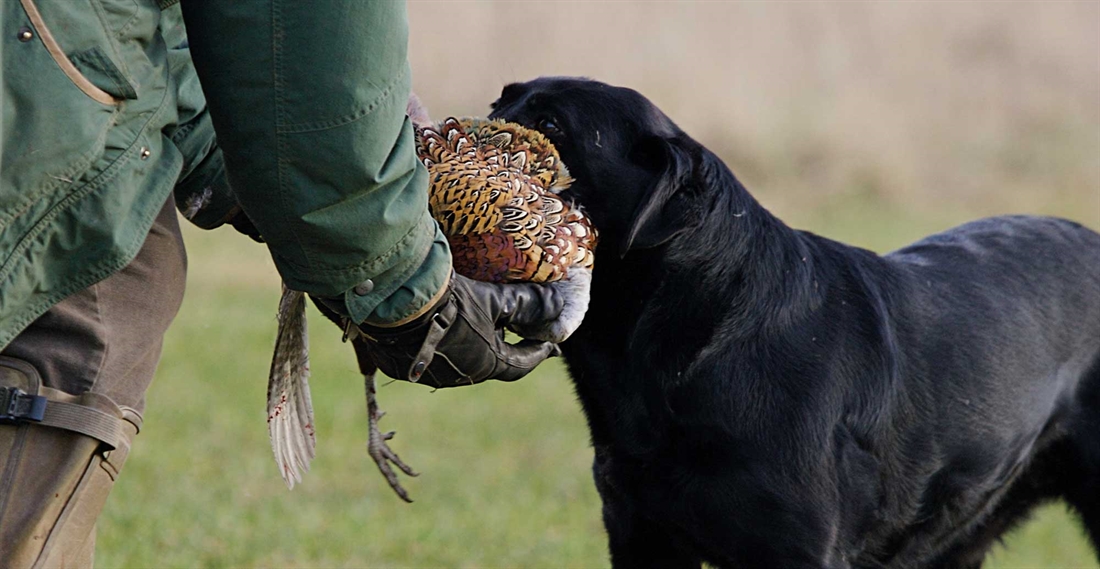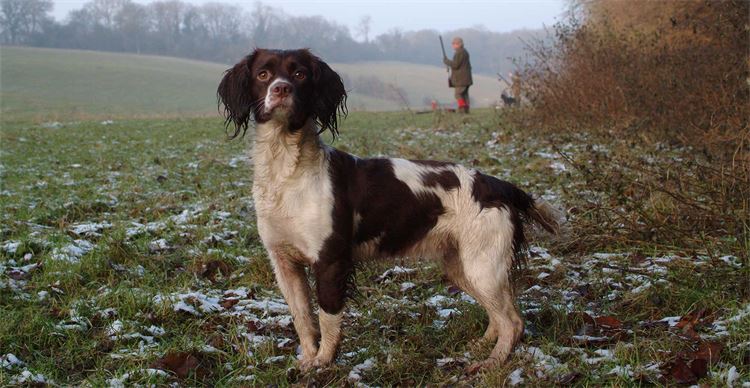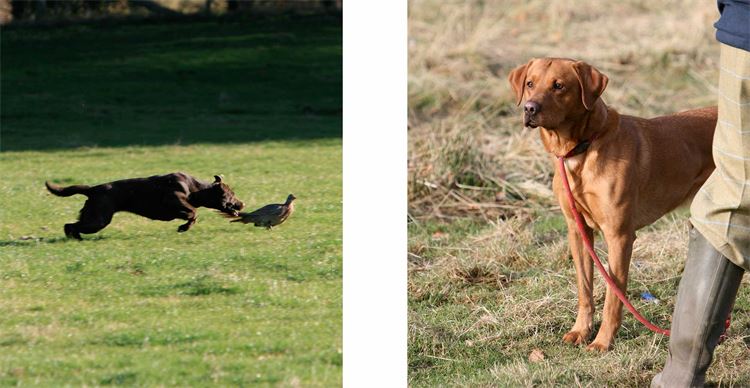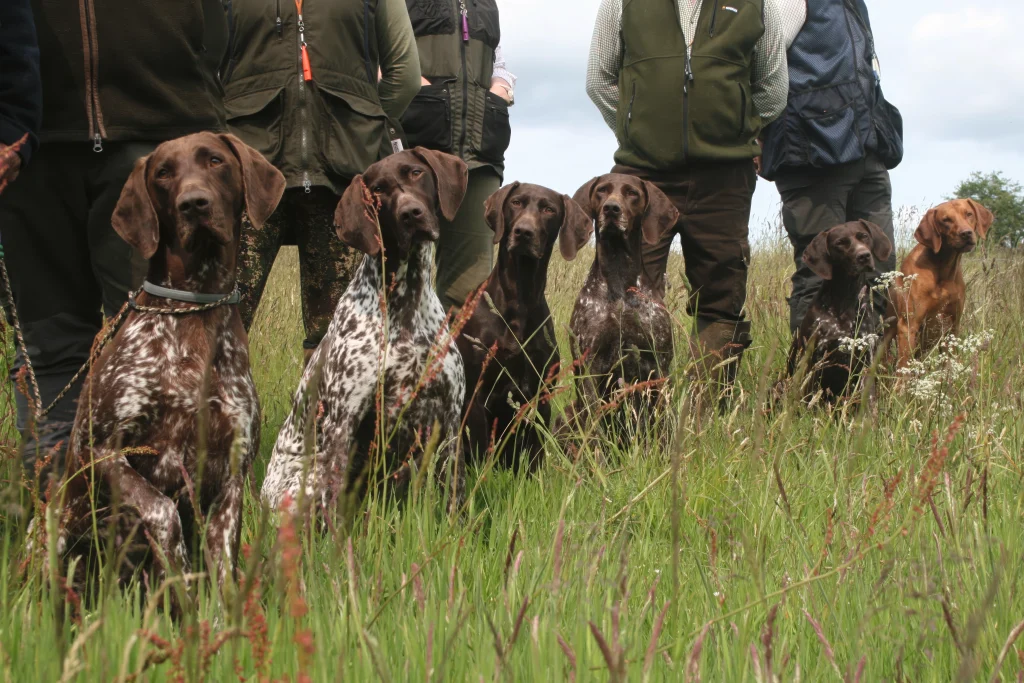Leave the gun at home
How to avoid heartbreak when introducing your dog to the shooting field.

You may think you have fully trained your gundog. In fact you know that it is the best dog you have ever owned. Now comes the test – your first day’s shooting together. Many a game Shot will take his/her dog out when it is sill far too young, too inexperienced and without sufficient (or any!) picking up experience.
These handlers suffer from two problems. Firstly, they believe that once a dog is properly trained it will do no wrong. To the contrary, only continued and consistent effort will maintain a high standard of performance. Also they are shooters first, dog handlers second. However, a game Shot who wishes to maintain a well-trained dog must train himself to think first and always of the dog.
How many times have we seen dogs pegged down during a drive, but straining at the lead, standing up and even whining? When, after the drive, his/her lead is removed, and before being given a command they are off to retrieve birds of their choice, possibly dropping a bird to pick-up another, and not obeying commands to come in with or without a bird? And how many times do we see Guns arrive at the shoot and immediately let their dogs out to run around with other dogs, even run into cover, and generally do as they choose?
Sitting quietly at the peg, off the lead during the drive and retrieving game (after the drive) selected by the handler with appropriate whistle and directional control, has to be the target to achieve. Running in to live or wounded birds cannot be accepted.
So, the time comes for your first day with the dog at a driven shoot. The first essential point is to leave your gun at home.
When you arrive at the shoot and greeted by the Guns, leave the dog in the car. When ready to move off to the peg, let the dog out, slip on the lead and walk the dog at heel to the peg, concentrating on the dog, rather than ignoring it in favour of conversation. You will go to a colleague’s peg (as you have no gun) and check where he would like you to stand. Place the dog at ‘sit’ off the lead, with a firm ‘stay’. During the drive you will watch your dog at all times, not the shooting or the birds, except to mark down those shot by the Gun at your peg. In this way the dog feels part of you as you are watching him and reassuring him. After the drive you will send the dog for birds of your choice, not many on the first day, trying to handle calmly, not getting excited yourself, and praising good work on return.
Assuming all goes well, then next time out shooting you will take your gun and shoot over your dog at your peg, again in front of you off the lead where you can see it and reassure it during the drive. It is fatal to ignore the dog in the excitement of the drive. If you do the dog will ignore you, think you do not care, think you cannot see it and will surely become unsteady and eventually unruly.
Peg dogs that were once well behaved and reliable, but have become badly behaved, unsteady and need tethering in order to control them, have become so as a result of losing respect and belief in their handler, as a consequence of being ignored on shooting days and taking second place to shooting. Remember… train yourself to think always of the dog. And maintain continued and consistent contact with your dog all day.
Making the most of picking-up
No dog can be considered trained and experienced or proven until it has been picking-up at shoots. The handler is not shooting on such days but concentrating on the dog at all times and, with a trainee dog picking the appropriate retrieves compatible with the experience of the dog (i.e. dead birds, wounded birds or runners).
When picking-up, it is essential to remember that a picker-up is there to retrieve birds that would otherwise be lost – he’s not here to train dogs. The keeper and shooting host will not be amused if you lose birds by using a dog that’s not up to it. Therefore, also take a well trained and experienced dog (or accompany someone else with one) to handle the difficult retrieves, and with the shoot owner’s and keeper’s permission, take your young dog that is thoroughly trained but inexperienced at picking-up. There is no room on a shoot for a dog that is not properly trained and rock steady.
Initially, keep the trainee dog on a lead whilst the drive is in progress and the birds are falling. You will be positioned 50–100 yards behind the Guns so the birds will be falling both in front and behind you. Do not stand behind a Gun who has a dog with him, as he will wish to pick his own birds. While the drive is in progress keep calm and watch your dog for signs of excitement or unsteadiness and correct it accordingly with checks on the lead and a stern “no”. Let your dog mark the birds.
When the drive is over ignore the dead birds in the open in front of you (the Guns will pick these) and send the trainee dog for a marked dead bird behind you in the cover, ditch or hedge. Try to select a bird (preferably not a runner) that the dog has marked late in the drive to ensure a quick retrieve. Take the bird from its mouth on return and praise the dog then command to ‘sit’ and let it cool off. Now would be a good time to send your more experienced dog for the more difficult retrieves so the trainee dog understands that all birds are not for his or her retrieval. If the first retrieve resulted in a clean pick-up then the younger dog can be sent for other retrieves. Perhaps try a blind retrieve to check it still handles well on the whistle after the initial excitement and responds to direction control. Do not allow too many retrieves on the first few days picking-up, which should be part days only.
A well-trained dog that has been shot over and seen a few runners, can soon be used for a whole day’s picking-up and then allowed to retrieve runners that are out of sight in cover – but always in the company of a well experienced dog to protect it from really hard retrieves and to meet the requirements of the shoot.
After one or two drives the trainee dog should be capable of sitting during the drive off the lead and afterwards while other dogs work, but always keep it on a lead while moving between drives (to reinforce the closeness and general obedience).
Sometimes at shoots there may be other dogs that are not well trained and are unsteady. If so, keep your distance as younger dogs have a great tendency to imitate unruly dogs and this must be avoided at all costs. Each and every sign of unsteadiness and lack of control must be dealt with and corrected/punished on the spot, otherwise the young dog may think such behaviour is permitted whilst out shooting, albeit not while training on dummies. Above all concentrate on your dog all day and try to predict its every move – prevention is better than cure.
After a few days controlled picking-up, your dog should be ready for a day’s shooting with you and your gun. Regular picking-up is the finest finishing tool and developer of experience.
Related Articles
Get the latest news delivered direct to your door
Subscribe to Gundog Journal
Unlock the full potential of your working dog with a subscription to Gundog Journal, the UK’s only dedicated magazine for gundog enthusiasts. Published bi-monthly, this authoritative resource delivers expert training advice, in-depth interviews with top trainers and veterinary guidance to help you nurture a stronger bond with your dog.
With stunning photography and thought-provoking content, Gundog Journal is your essential guide to understanding, training and celebrating your working dog.
Save 10% on shop price when you subscribe, with a choice of packages that work for you. Choose from Print & Digital or Digital only with each journal delivered directly to your door or via the app every other month, plus access to past issues with the digital back issue library.










